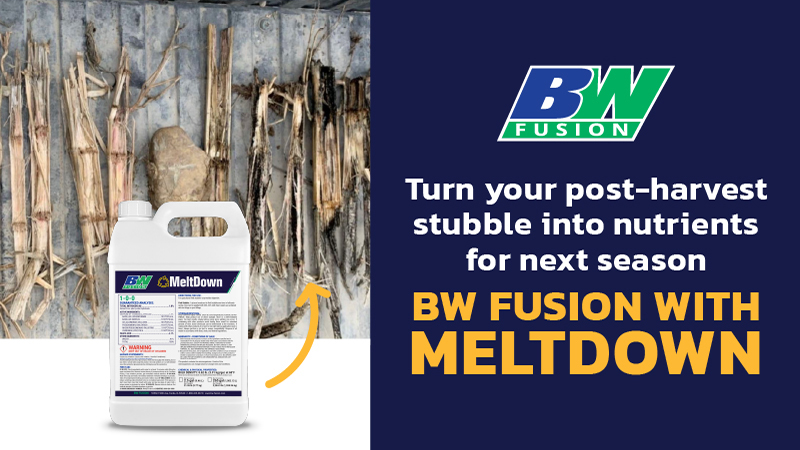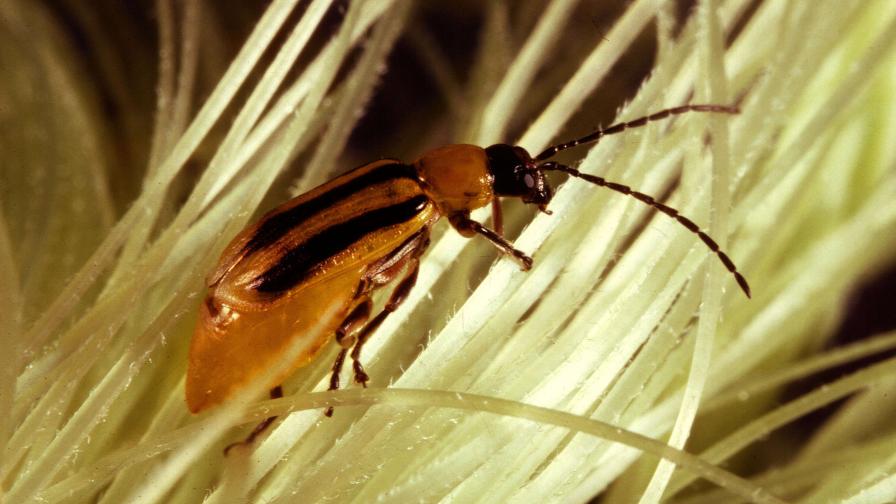In-Field Management of Corn: The Need for Extra Effort in 2020
In a normal crop year, in-field management of corn would not be that difficult. Although there might be some variations in disease or insect pressures from one year to the next, the overall way ag retailers and their grower-customers manage their corn fields doesn’t typically change all that much in a normal year.
Of course, the key to this kind of reasoning only works when the words “normal year” can be used. And as most observers will attest to, 2019 was anything but normal.
“Last year was very, very unusual for the entire agricultural market,” says Travis Gustafson, a Crop Protection Agronomist for Syngenta Crop Protection. “Primarily, we saw diseases showing up throughout 2019 in places we typically weren’t used to seeing them show up in. It was a real problem for many growers to have to deal with.”
By now, whole volumes of academic and business-to-business literature has been written focusing upon just how atypical a year 2019 was for agriculture. In addition to dealing with the after-effects of an extended trade dispute between the U.S. and China (which depressed commodity prices and kept agricultural exports are historical low levels), ag retailers and their grower-customers also had to deal with less than ideal weather conditions throughout the year. In fact, across many parts of the country, cool and extremely wet weather hampered row crop plantings from late February to early June. By the time conditions improved enough to allow fields to be worked, many growers found that there wasn’t enough time left in the season for every field to get planted. Indeed, if there were two words that best summed up the 2019 growing season for numerous farms across the U.S., there were “prevent plant.”
Based upon Farm Bureau and USDA estimates, more than 19 million acres of farmland ended up in this “prevent plant” situation during the 2019 growing season. The state with the largest amount of prevent plant farmland was South Dakota at 3.9 million acres. However, key corn producing states such as Illinois and Ohio also had very high prevent plant acreage (more than 1.5 million acres apiece, according to the data). As Nathanial Quinn, Marketing Manager for Corn, Soybeans, and Sugar Beets for AMVAC Chemical Corp., put it: “The number of prevent plant acres in 2019 was not only significant, it was historic.”
And the after-effects of this amount of prevent plant acres from 2019 will easily spill over into the 2020 growing season, say most observers. “For one thing, insects that like to feed on crops like corn may have been left unchecked with a great refuge of plants to sustain them,” says Lynn Justesen, Technical Service Lead Row Crop for UPL NA, Inc. “Diseases also could be present in these fields as well because of some high residues being leftover, which could make them harder to control if growers want to reclaim these acres for the 2020 season.”
David Dyson, Agronomist at The Andersons, agrees with this assessment. “Prevent plant last year has left many acres fallow for over a year now,” says Dyson. “The continual saturation of our productive farmland in 2019 has left many acres eroded and vulnerable to compaction. This can be detrimental to the natural microorganisms and soil structure that aid in the conversion of minerals in the soil to usable nutrients corn and soybeans can absorb.”
The Key Challenges for 2020
Overall, despite commodity price pressures, 2020 is shaping up to be a banner year for corn. According to the initial planting estimates from USDA released in March, U.S. growers plan to plant 97 million acres of corn during the year, an increase of 8% compared with the 2019 numbers. Furthermore, because of how delayed planting ended up being during 2019, many growers were expected to move extremely quickly with their plans in 2020.
“The reason this will happen is two-fold, in my opinion,” says Dyson. “First, last season’s late start is still fresh on everyone’s minds and producers across the Corn Belt will be worried about the weather turning sour and a repeat of 2019 record prevent planting acres or June corn planting. This will have producers trying to compensate by pushing the planting envelope early this year.”
The other reason ties back to one of the other watershed disruptive events of 2020 — the coronavirus pandemic. “Second, with the COVID-19 quarantine, producers are getting restless just like the rest of the U.S. population,” says Dyson. “They will find any excuse to get out of the house and start field work. This will come as a welcome relief, most will be isolated in tractors and trucks, so they will still be practicing social distancing.”
As far as corn in-field management goes for 2020, Dyson points to the use of some kind of starter fertilizer to help increase the chances for plant health. “When we use a starter fertilizer, we are trying to achieve three main objectives: Faster emergence, quicker pollination, and earlier dry-down in the fall,” he says. “By placing beneficial microorganisms in the starter with a food source such as a fulvic acid, we can encourage the repopulation of this critical microflora in our soils.”
Recently, he adds, the company introduced a new biological product designed to be mixed with starter fertilizers called BioKick. “Season Pass with MicroCarb plus BioKick allows growers to place available nutrients, beneficial microorganisms, and a carbon food source in-furrow with the seed at planting,” says Dyson. “Studies have shown the closer to the seed these vital inputs are placed, the more efficient the plant uptake will be.”
The Corn Rootworm Problem
For in-field management of corn in 2020, AMVAC’s Quinn agrees that starting out with healthy plants is an important first step. However, he adds that pest pressures are likely to be “ramped up” this year because of the aforementioned prevent plant acres from 2019. “These fields probably already contained plenty of secondary pests,” he says. “Because really nasty corn pest such as corn rootworm could be magnified with the abundance of food that was available to them.”
According to experts, corn rootworm is one of the most destructive corn pests in the U.S. Each year, it is estimated that this particular pest costs growers more than $1 billion in reduced grain yield and control measure costs. “Corn rootworm is one of the top pests on growers’ minds when it comes to corn insect control,” says Dr. Tim O’Brien, Agrisure Traits Manager for Syngenta. “Without proper planning and management, this adaptable insect can wreck havoc on corn fields and negatively affect bottom lines.”
To help combat these expected corn rootworm pressures in 2020, AMVAC’s Quinn points to several offerings from his company that can help, such as Aztec HC (tebupirimphos). “Aztec HC can control all species of corn rootworm (Northern, Western, Southern, Mexican) and rotation-resistant variants of Northern and Western corn rootworm,” he says. “It can also be used to control seed-attacking pests including cutworm, seed corn beetle, seed corn maggot, wireworm, and white grub.”
As for diseases, the prevent plant acres of 2019 is expected to see more of these broadening their geography during the 2020 growing season. In fact, according to Syngenta’s Gustafson, such corn pathogens as tar spot “really moved into new acres last year, with this disease going across Iowa,” he says. “It hasn’t shown up in Nebraska where I live just yet, but we are preparing for it and other diseases nonetheless, just in case.”
Eric Castner, Technical Service Manager for FMC Corp., also saw more disease pressures during 2019 that are likely to carry over into 2020. “In particular, gray leaf spot in corn was much worse than it has been before,” says Castner.
To fight this disease in 2020, Castner recommends corn growers look at FMC’s Lucento fungicide (bixafen+flutriafol) for help. “Lucento has unique mobility throughout the plant to defend against and control diseases such as gray leaf spot,” he says. “It also can be used to reduce the dependence on other fungicides such as strobilurins, where some resistance issues have begun showing up.”
With luck, in-field management for corn will once again become more normal in the years ahead. But in the meantime, following some of these methods when it comes to applying crop inputs will help ag retailers and their grower-customers keep on top of pest and disease pressures during this challenging growing season.







